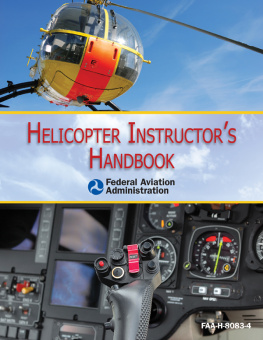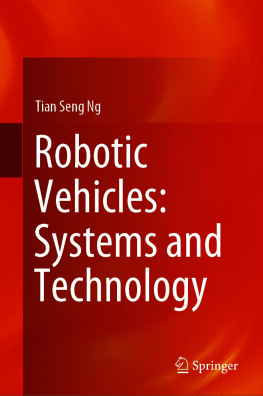ROTARY-WING AERODYNAMICS
Two Volumes Bound as One
VOLUME I:
BASIC THEORIES OF ROTOR AERODYNAMICS
(With Application to Helicopters)
by W. Z. STEPNIEWSKI
VOLUME II:
PERFORMANCE PREDICTION OF HELICOPTERS
by C. N. KEYS
Edited by W. Z. Stepniewski
Dover Publications, Inc., New York
This Dover edition, first published in 1984, is an unabridged, slightly corrected republication in one volume of the work originally published in two volumes by the Science and Technical Information Office of the National Aeronautics and Space Administration for the U.S. Army Air Mobility Research & Development Laboratory of the Aviation Systems Command. revision was prepared by Boeing Vertol Company. Indexes have been added to the Dover edition at the end of each volume. Wanda L. Metz was Associate Editor for this work.
Library of Congress Cataloging in Publication Data
Stepniewski, W. Z. (Wieslaw Zenon), 1909
Rotary-wing aerodynamics.
An unabridged, slightly corrected republication in one volume of the work originally published in two volumes by the Science and Technical Information Office of the National Aeronautics and Space Administration in 1979. is being reprinted here from the 1981 edition revised and edited by W. Z. Stepniewski [for the U.S. Army Air Mobility Research and Development Laboratory]T. p. verso.
Includes bibliographical references and indexes.
Contents: Basic theories of rotor aerodynamics (with application to helicopters)Performance prediction of helicopters.
1. HelicoptersAerodynamics. I. Keys, C. N. II. Title.
TL716.S76 1984 629.132'3 83-20528
ISBN-13: 978-0-486-64647-3
ISBN-10: 0-486-64647-5
Manufactured in the United States by Courier Corporation
64647508
www.doverpublications.com
FOREWORD
In recent years, there has been an increasing volume of reports, articles, papers, and lectures dealing with various aspects of rotary-wing aircraft aerodynamics. To those who enter this domain, either as graduate students with some background in general aerodynamics, or those transferring from other fields of aeronautical or nonaeronautical engineering activities, this vast amount of literature becomes a proverbial haystack of information; often with the result of looking for a needle that isnt there. But even those who are professionally engaged in some aspects of rotary-wing technology may experience a need for a reference text on basic rotor aerodynamics.
Through my experience both as an educator and practicing engineer directly involved in various aspects of industrial aeronautics, it became doubly apparent that there was a need for a textbook that would fulfill, if not all, at least some of the above requirements.
With this goal in mind, the text entitled Rotary-Wing Aerodynamics was written under contract from USAAMRDL/NASA Ames. On one hand, the objective is to provide an understanding of the aerodynamic phenomena of the rotor and on the other, to furnish tools for a quantitative evaluation of both rotor performance and the helicopter as a whole.
Although the material deals primarily with the conventional helicopter and its typical regimes of flight, it should also provide a comprehensive insight into other fields of rotary-wing aircraft analysis as well.
In order to achieve this dual aim of understanding and quantitative evaluation, various conceptual models will be developed. The models will reflect physical aspects of the considered phenomena and, at the same time, permit establishment of mathematical treatment. To more strongly emphasize this duality of purpose, the adjective phystco-mathematical will often be used in referring to these models.
It should be realized at this point that similar to other fields of engineering analysis, conceptual modelsno matter how complicated in detailstill represent a simplified picture of physical reality. It is obvious, hence, that the degree of sophistication of the physicomathematical models should be geared to the purpose for which they are intended. When faced with the task of developing such a model, one may be advised to first ask the following two questions: (1) whether the introduction of new complexities truly contributes to a better understanding of the physics of the considered phenomena and their qualitative and quantitative evaluation, and (2) whether the possible accuracy of the data inputs is sufficiently high to justify these additional complexities.
In this respect, one should determine whether a more complex model would truly lead to a more accurate analysis of the investigated phenomena or just, perhaps, that the procedure only looks more impressive while mathematical manipulation would consume more time and money. Furthermore, it should be realized that often in the more complex approach, neither intermediate steps nor final results can be easily scrutinized.
With respect to rotary-wing aerodynamics in general, and performance predictions in particular, one should realize that aerodynamic phenomena associated with the various regimes of flight of an even idealized, completely rigid rotor are very complicated. Furthermore, the level of complexity increases due to the fact that in reality, every rotor is non-rigid because of the elasticity of its components and/or built-in articulations. As a result, a continuous interaction exists between aerodynamics and dynamics, thus introducing new potential complexities to the task of predicting aerodynamic characteristics of the rotor. Fortunately, even conceptually simple models often enable one to get either accurate trends or acceptable approximate answers to many rotary-wing performance problems.
By following the development of basic rotor theories-from the simple momentum approach through the combined momentum and blade-element theory, vortex theory, and finally, potential theory-the reader will be able to observe the evolution of the physicomathematical model of the rotor from its simplest form to more complex ones. It will also be shown that an understanding or explanantion of the newly encountered phenomena may require modifications and additions and sometimes, a completely new approach to the representation of the actual rotor by its conceptual model. By the same token, a better feel is developed with respect to the circumstances under which a simple approach may still suffice. Finally, these simpler and more easily scrutinized methods may serve as a means of checking the validity of the results obtained by potentially accurate, but also more complicated ways which may be prone to computational errors.
Presentation of the above-outlined theories, plus considerations of airfoils suitable for rotary-wing aircraft constitutes the contents of , where complete performance predictions are carried out for classical, winged, and tandem configurations including such aspects as performance guarantees and aircraft growth.
The existing need for a text conforming to the above outlined philosophy was recognized by representatives of USAAMRDL and in particular, by Mr. Paul Yaggy, then Director of USAAMRDL, and Dr. I. Statler, Director of Ames Directorate whose support made possible the contract for the preparation of the first two volumes.
To perform this task, a team was formed at Boeing Vertol consisting of the undersigned as Editor-in-Chief and author of ; and Mrs. W. L. Metz as Associate Editor. The course of the work was monitored by Mr. A. Morse and Dr. F.H. Schmitz of Ames Directorate; while Mr. Tex Jones from USAAMRDL-Langley Directorate provided his technical assistance and expertise by reviewing the material contained in both volumes. Thanks are extended to the abovementioned as well as the other representatives of USAAMRDL. Finally, my associates and I wish to thank the management of Boeing Vertol; especially, Messrs. K. Grina, J. Mallen, W. Walls, and E. Ratz for their support, understanding and patience.
Next page












